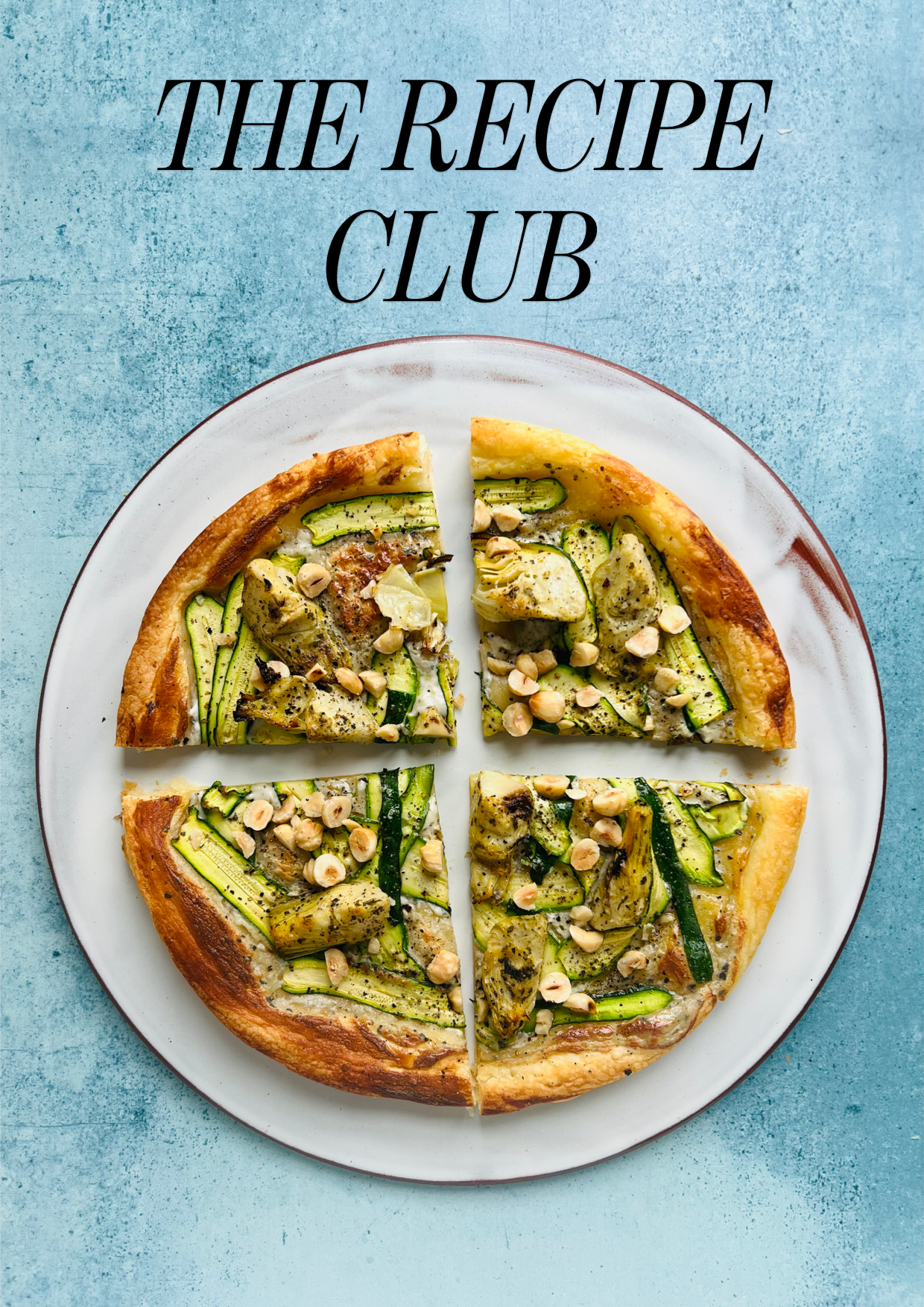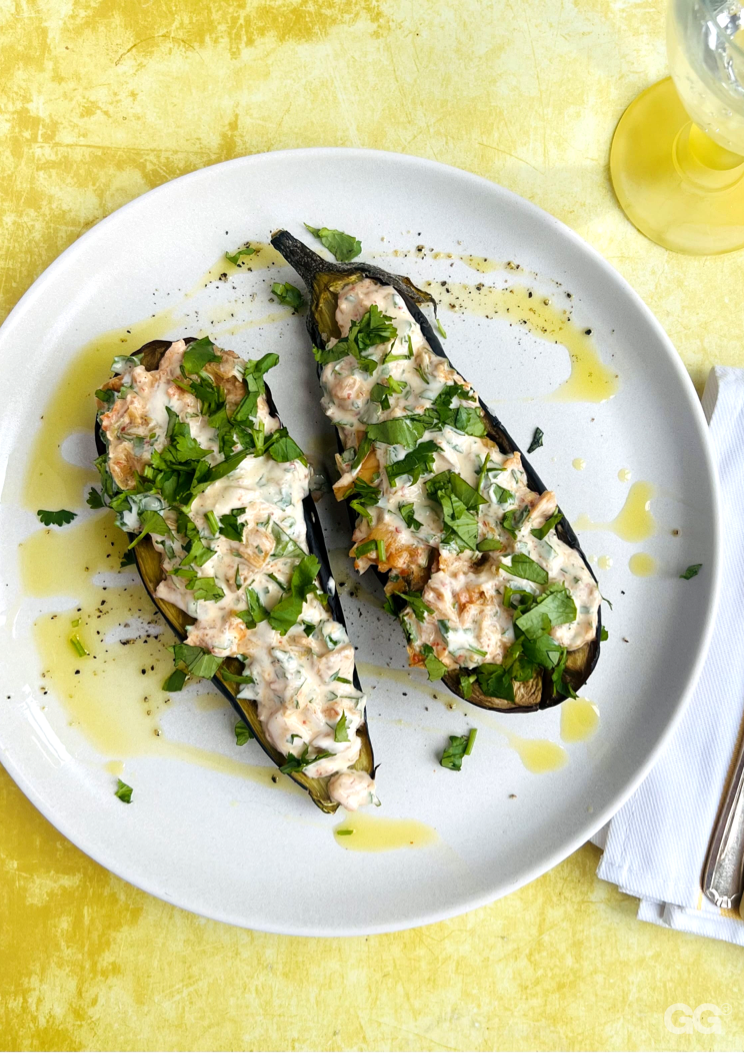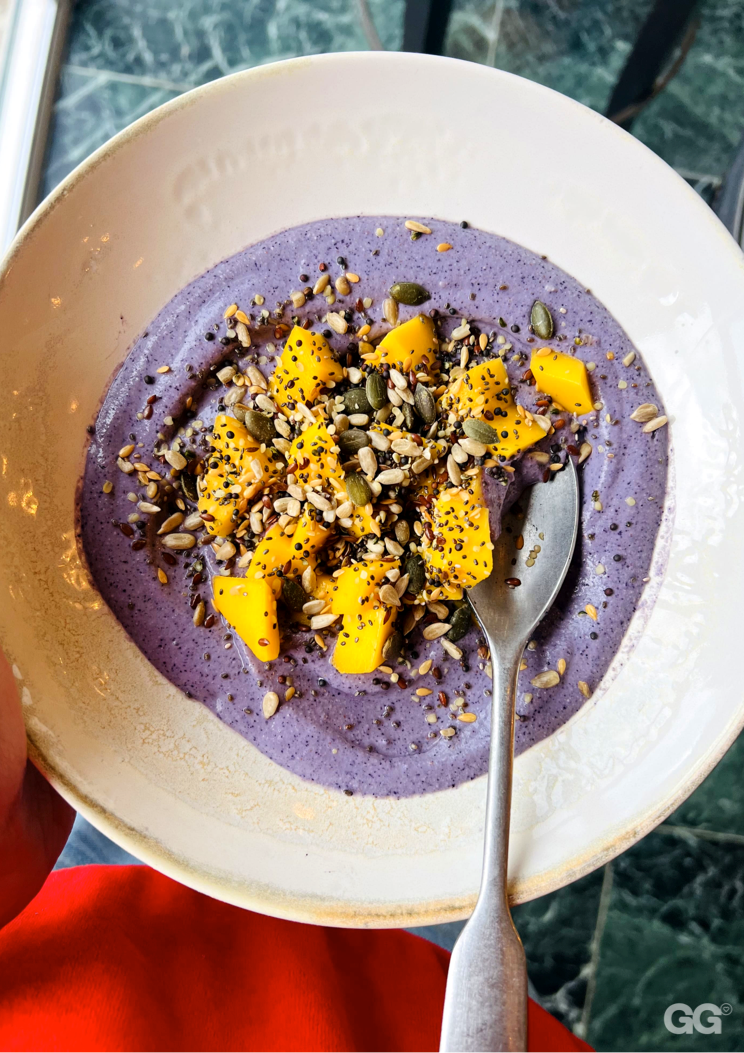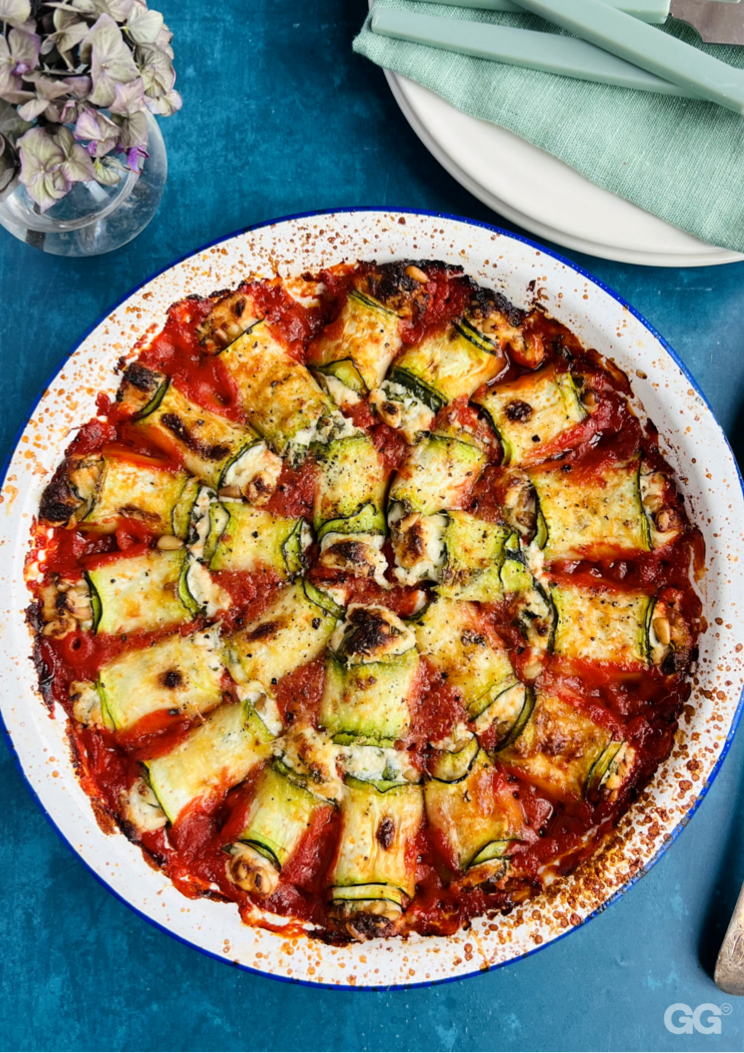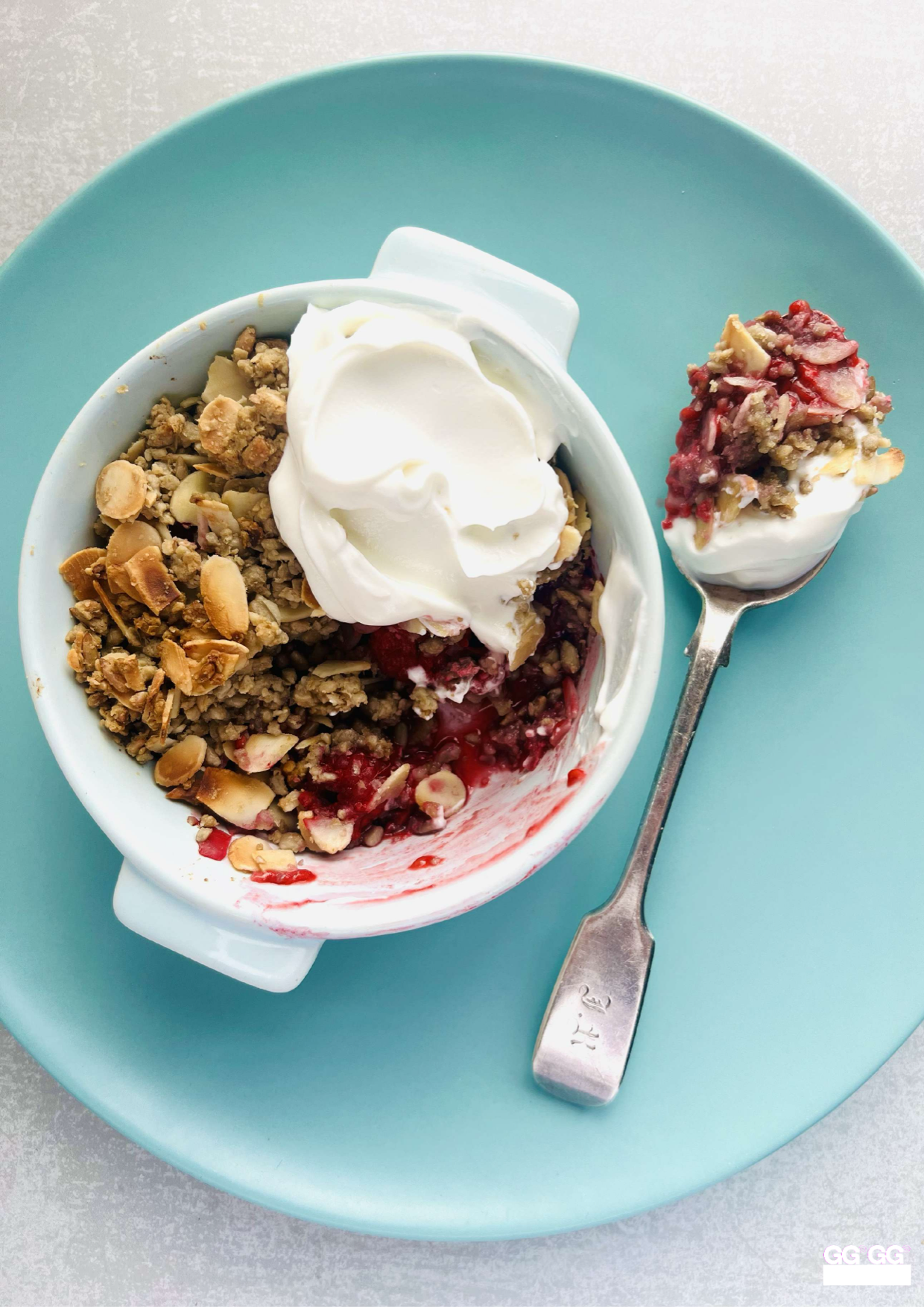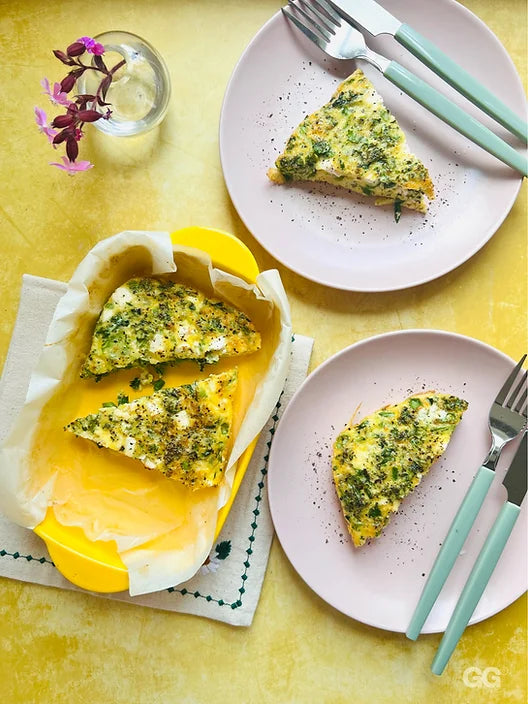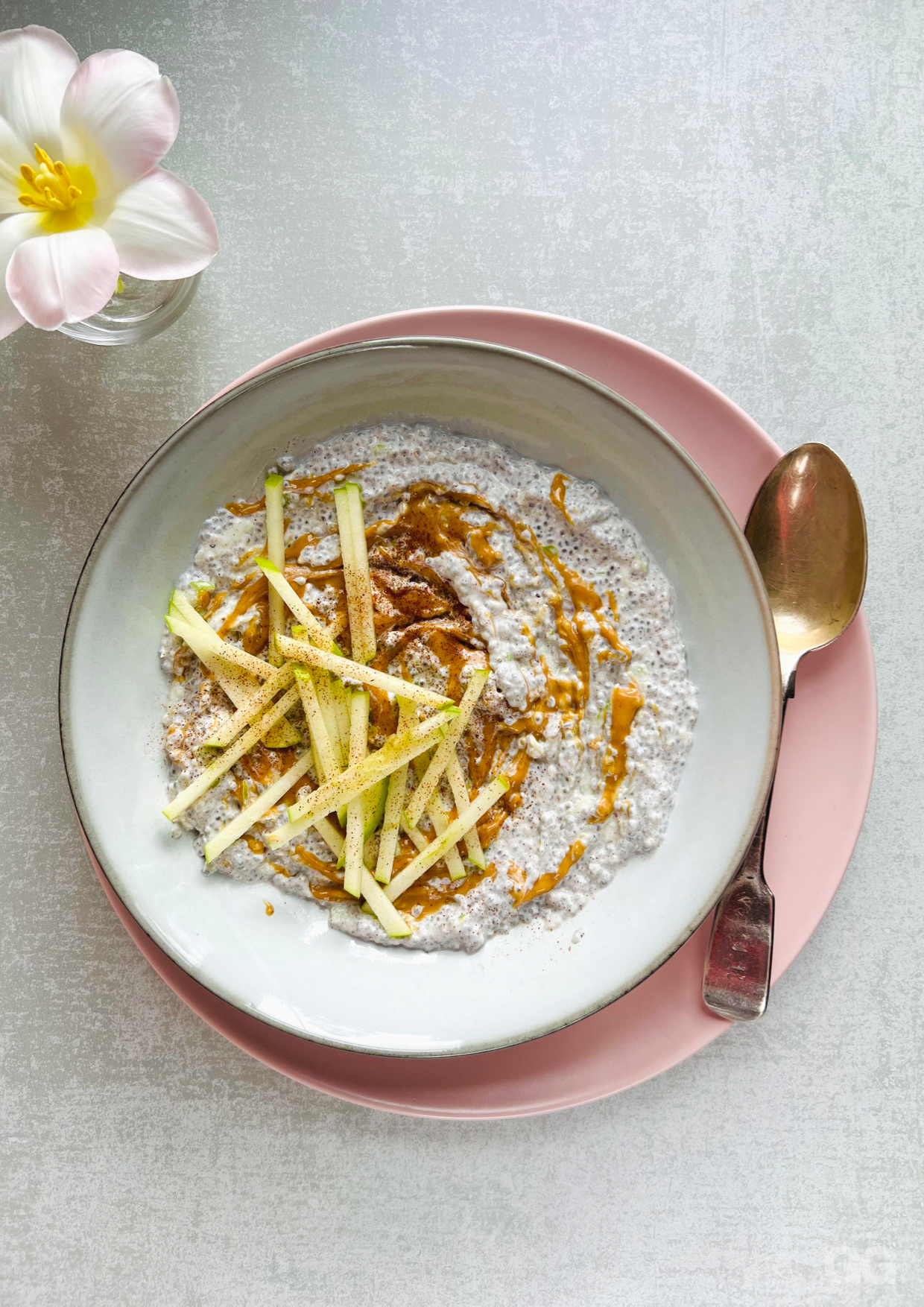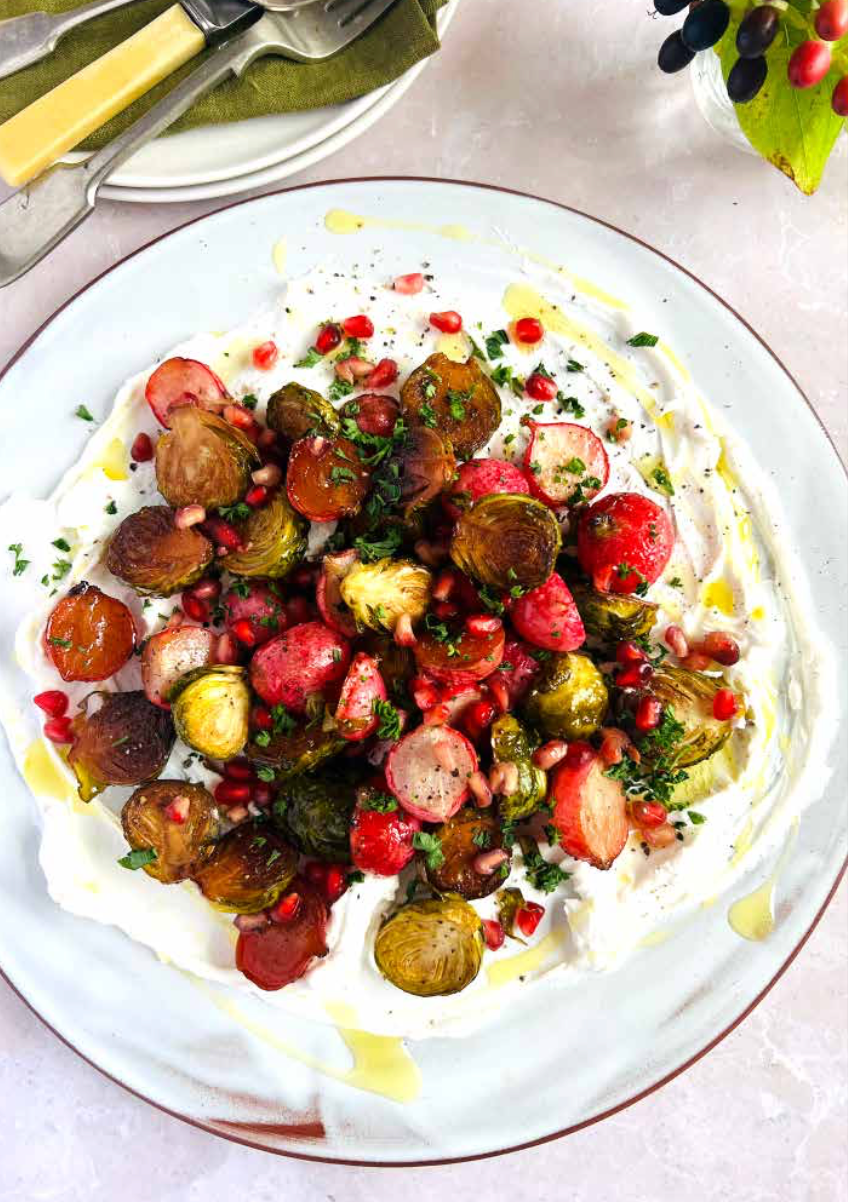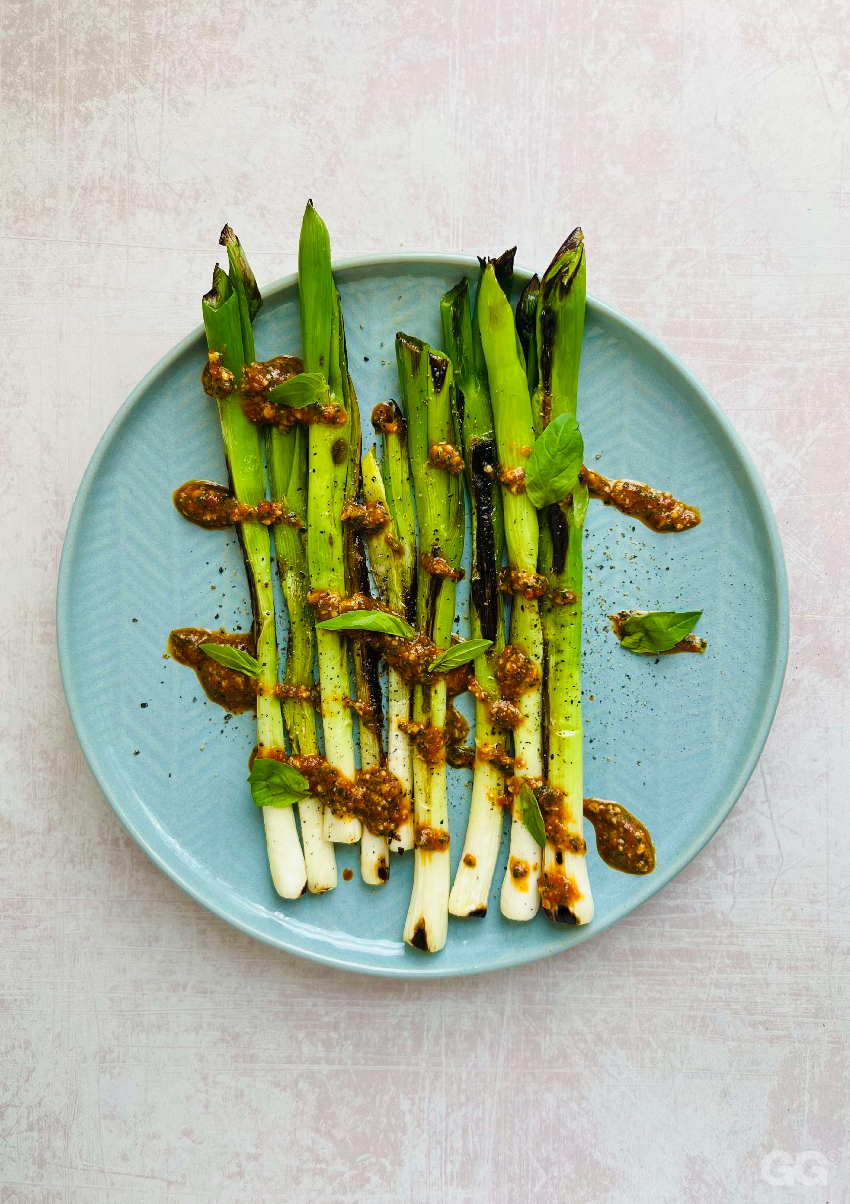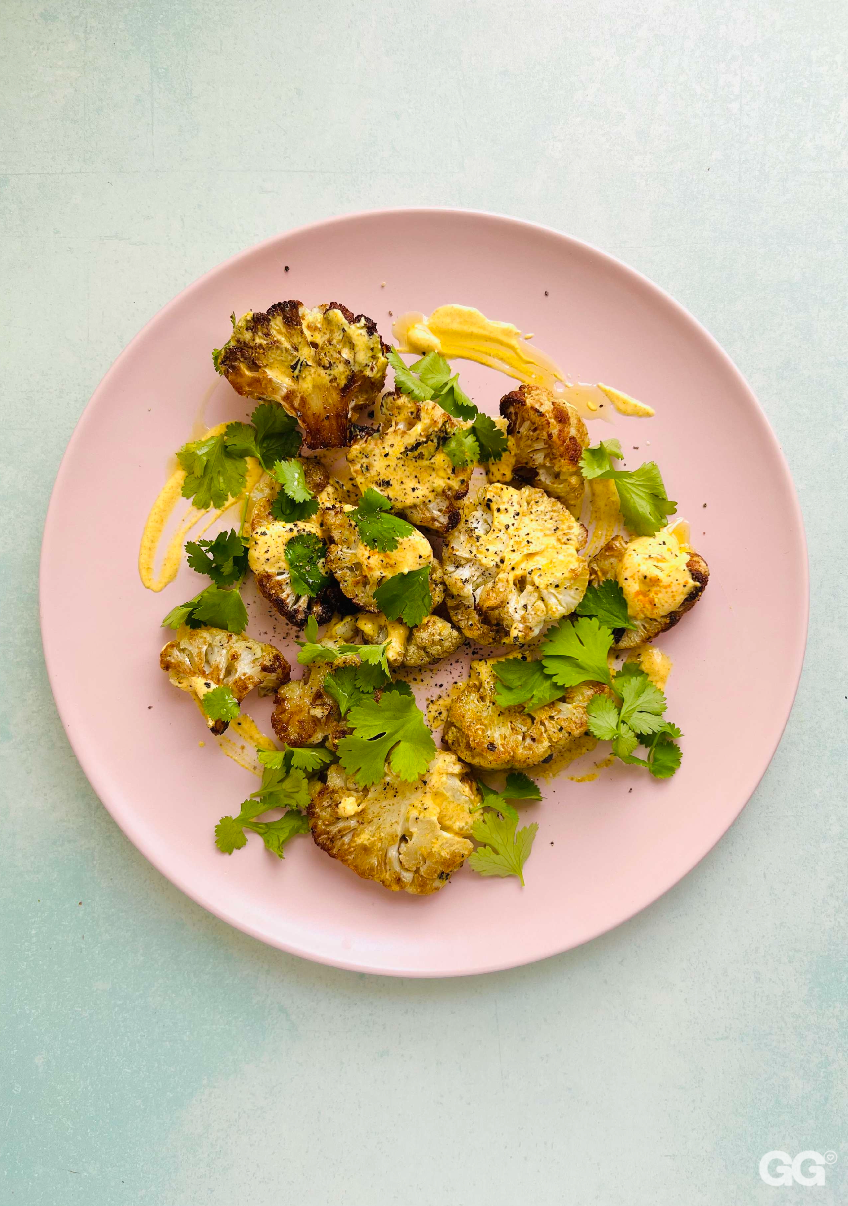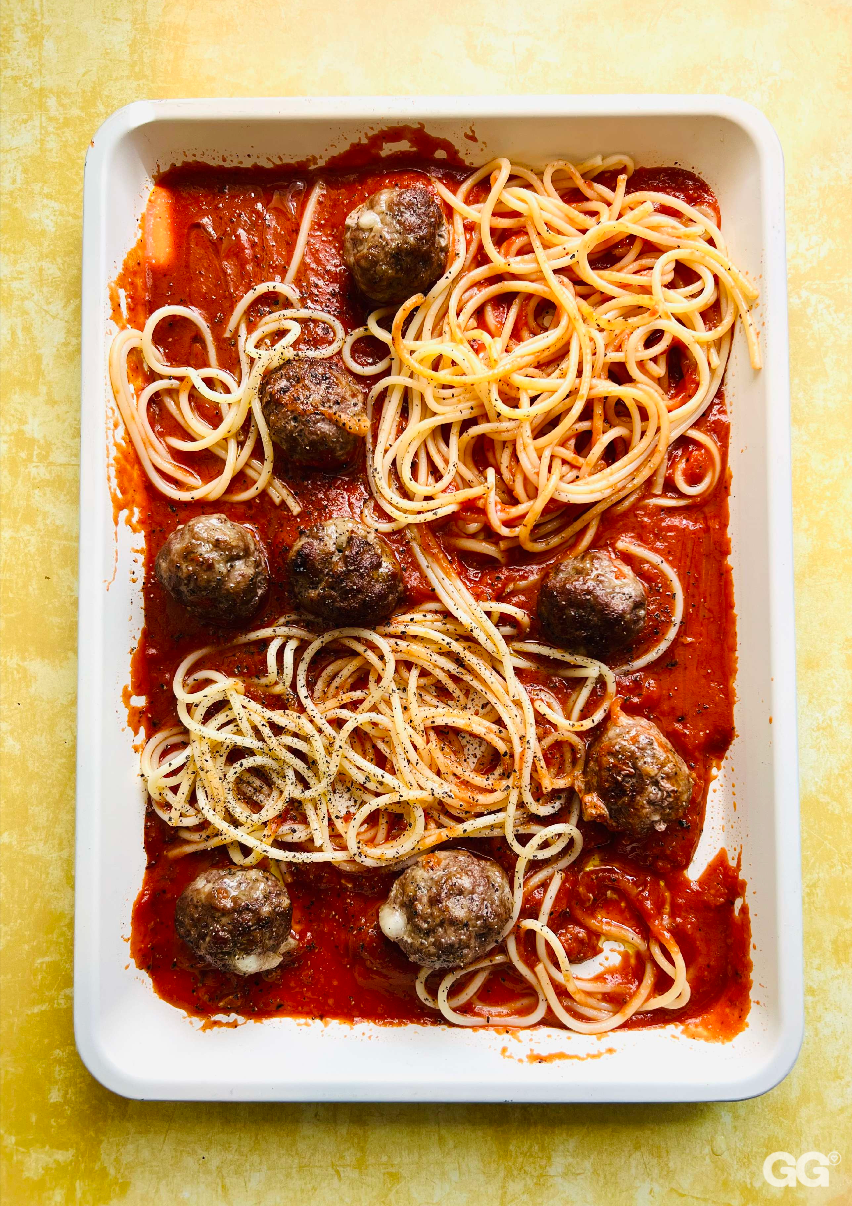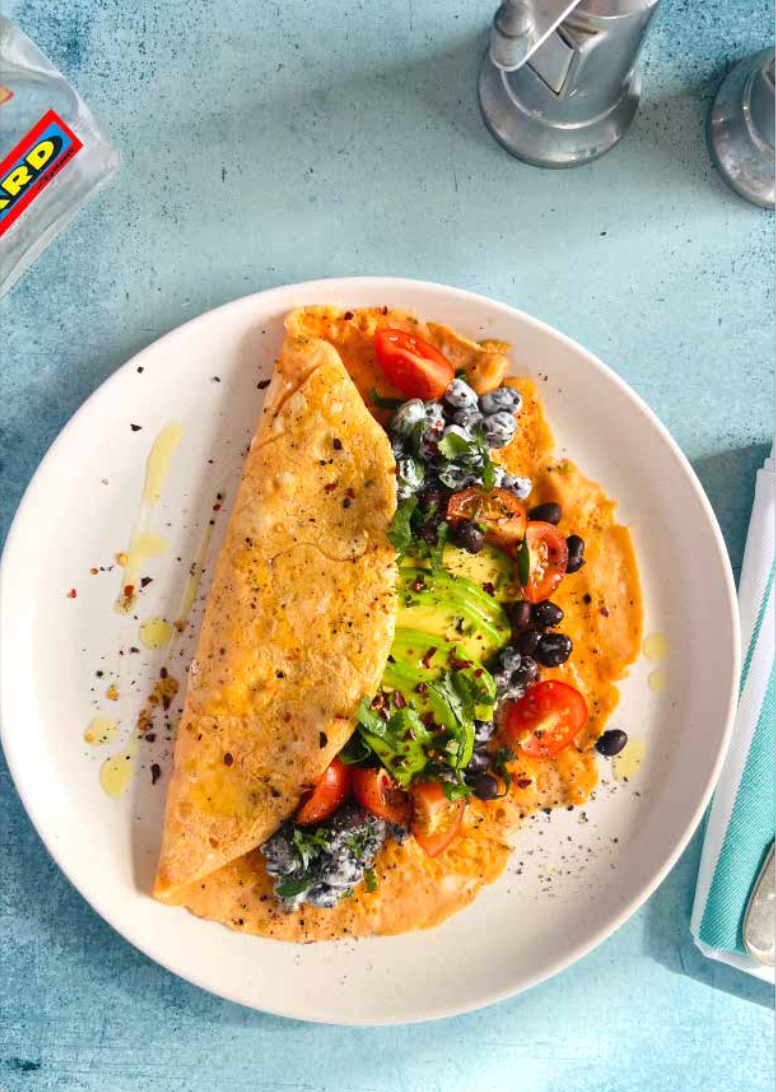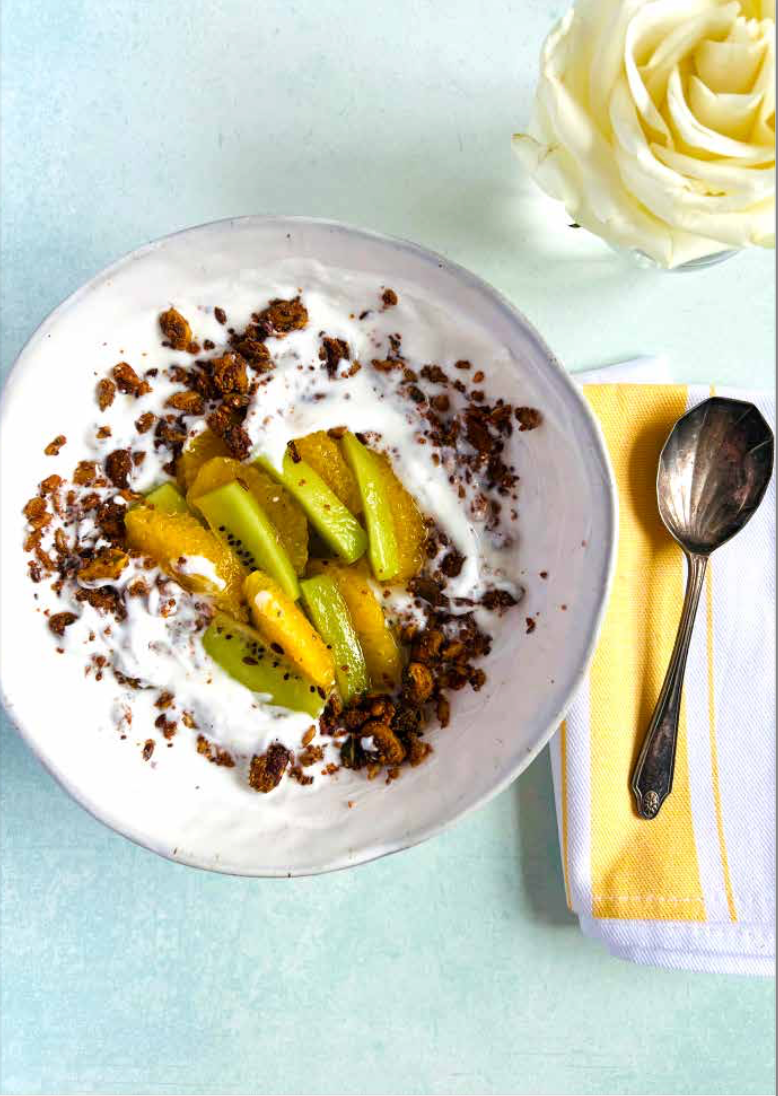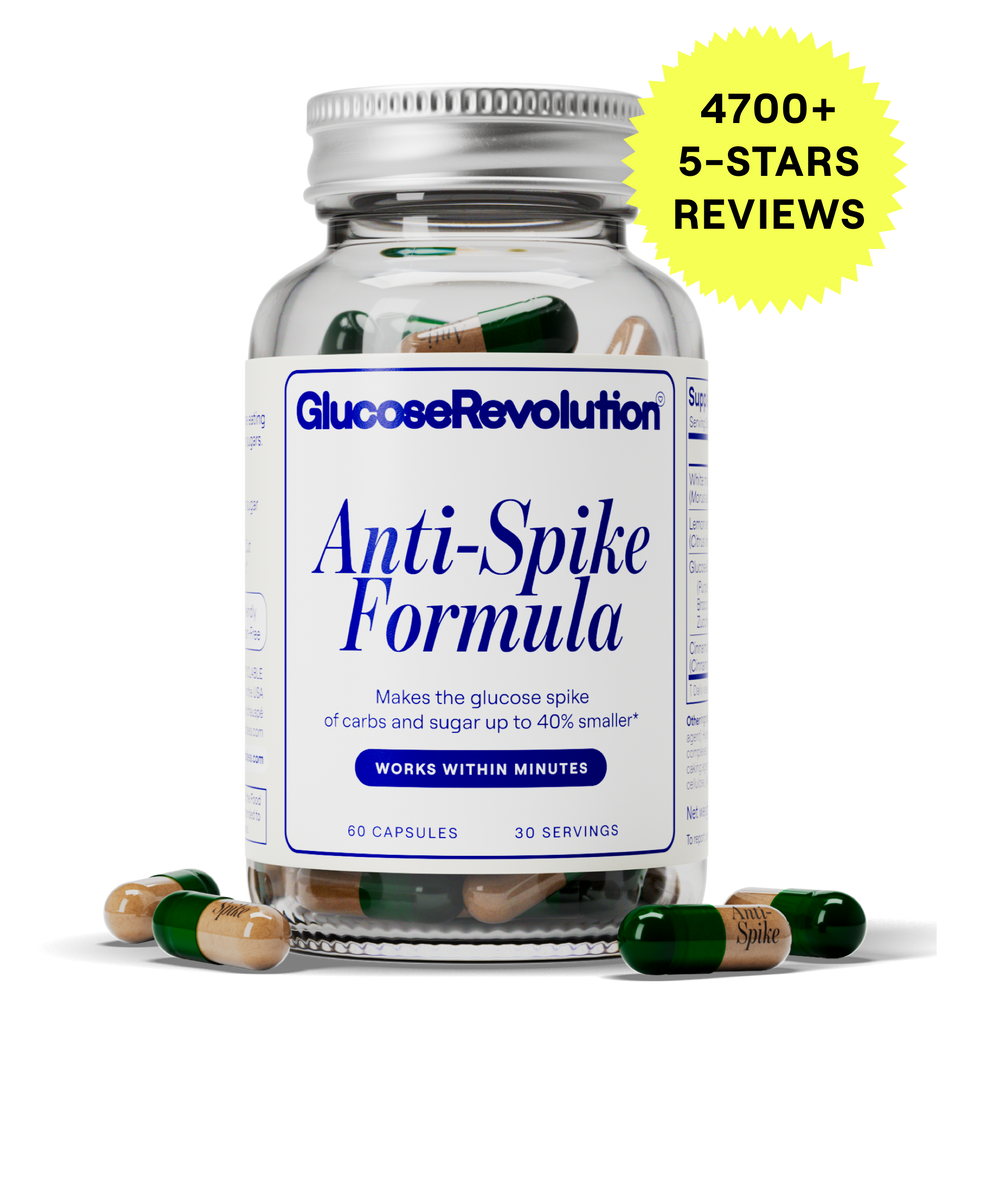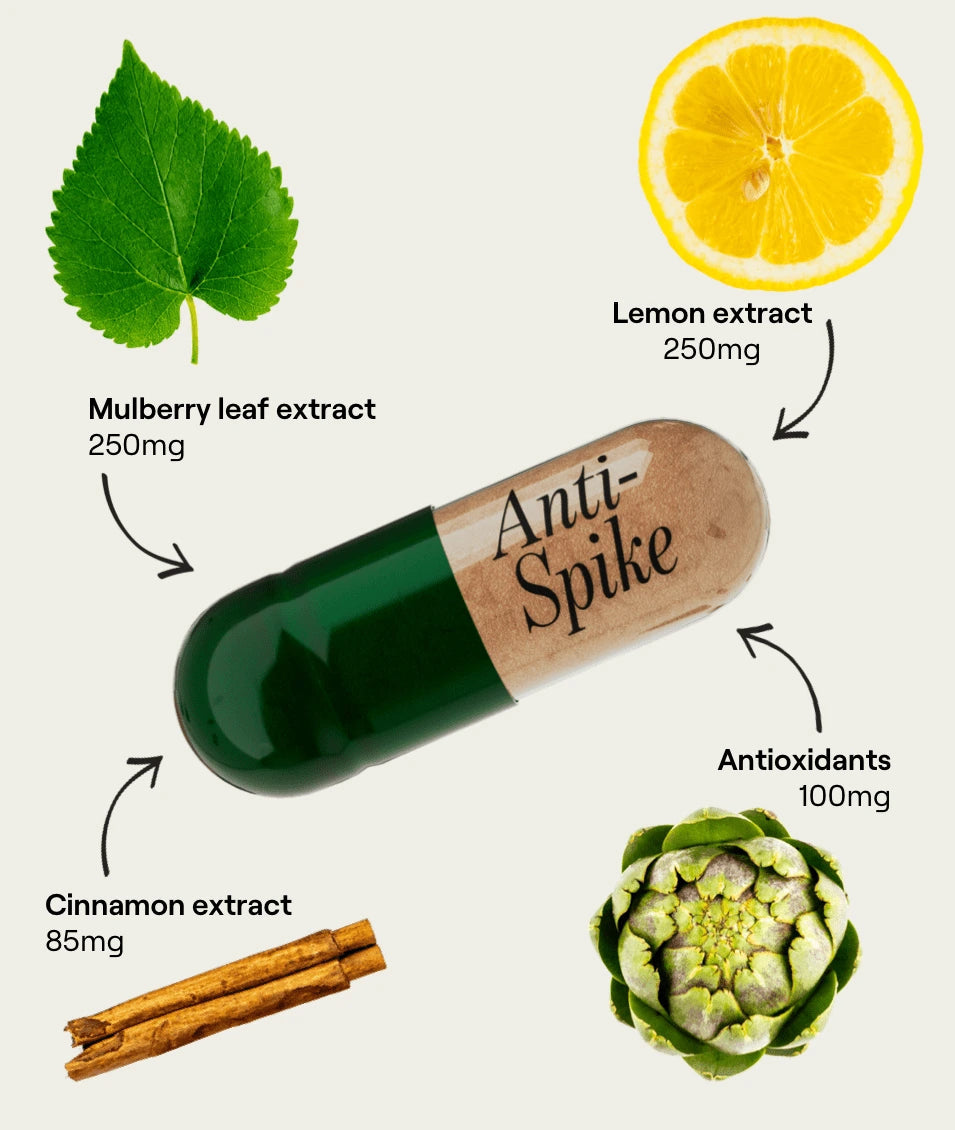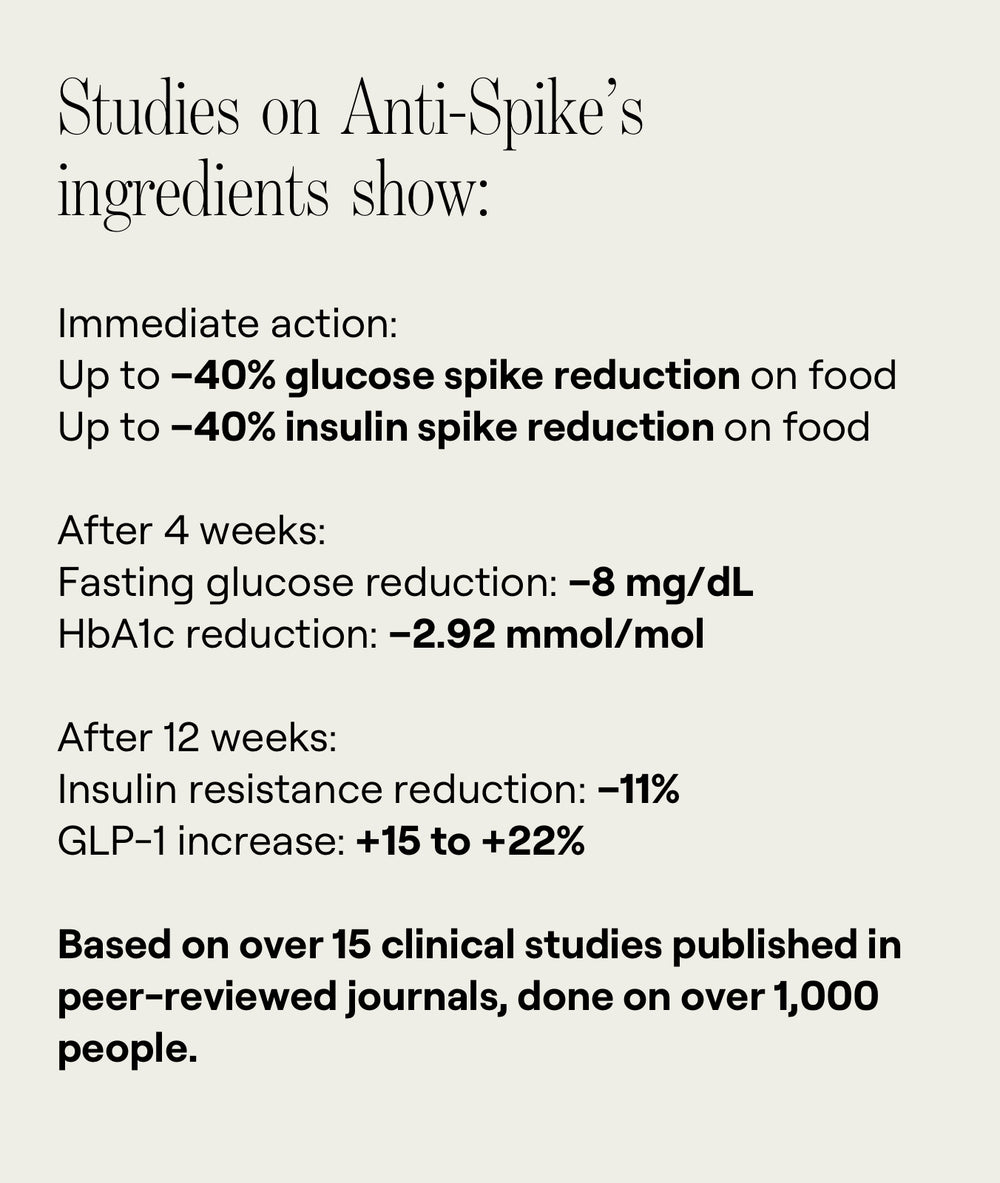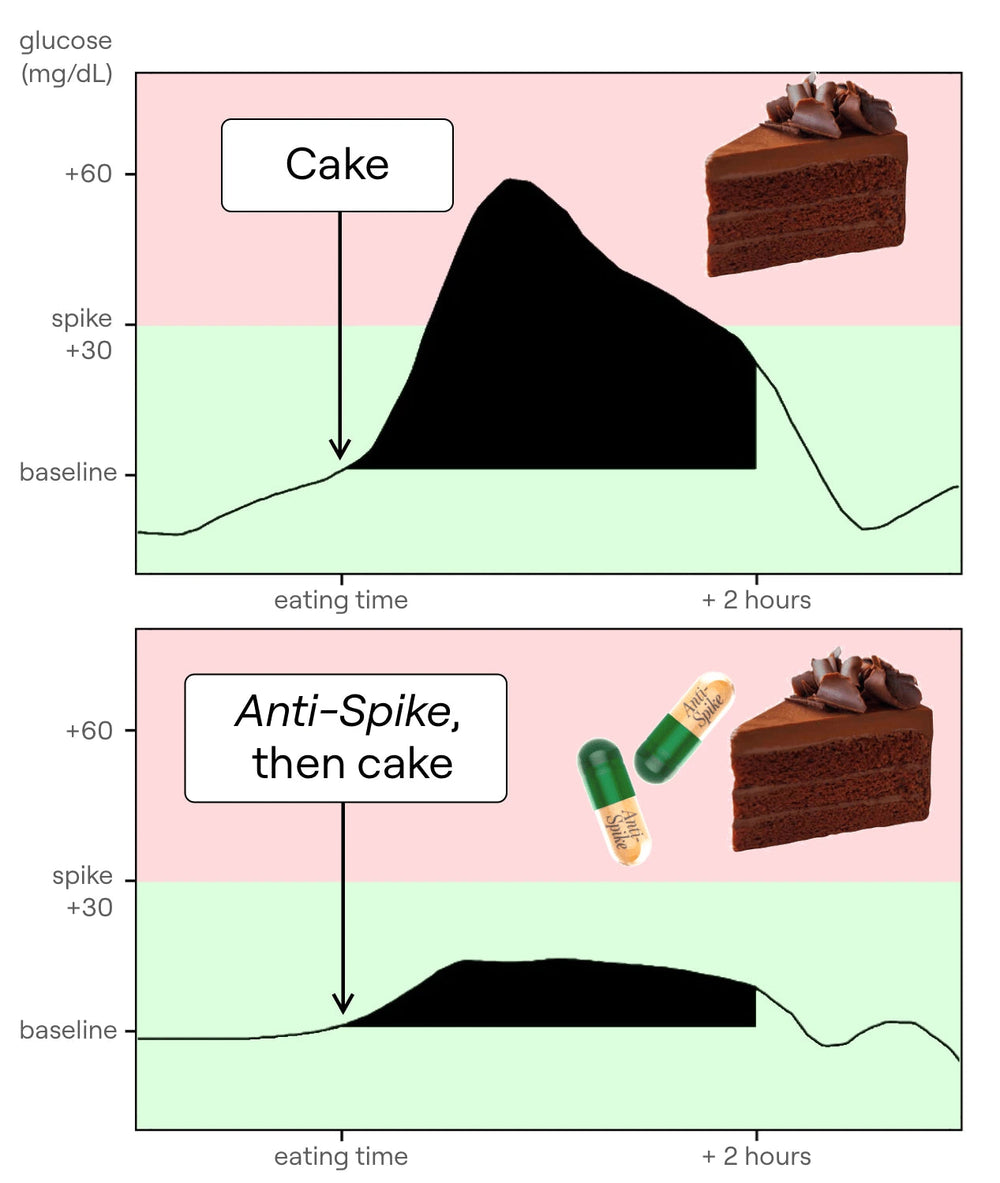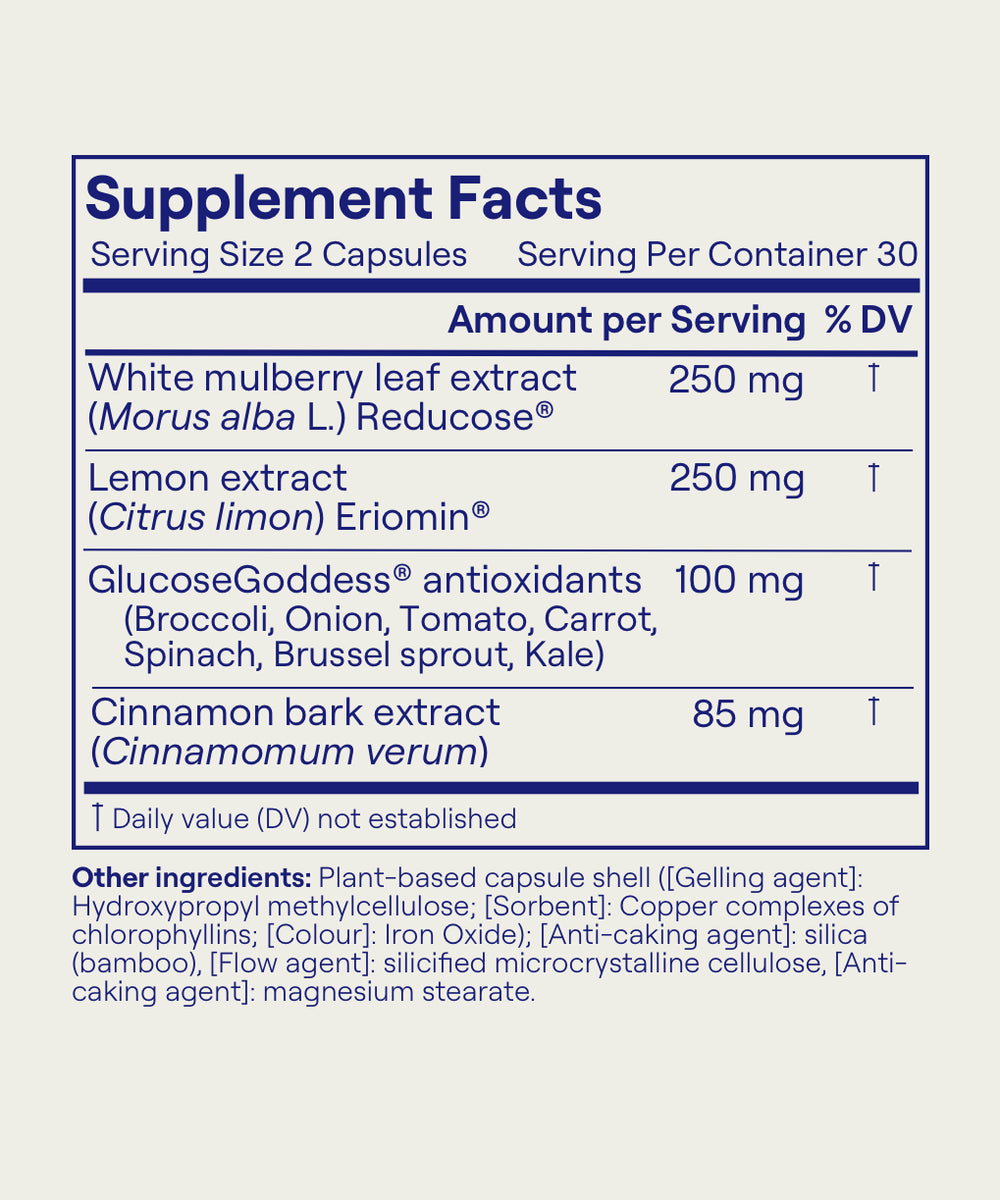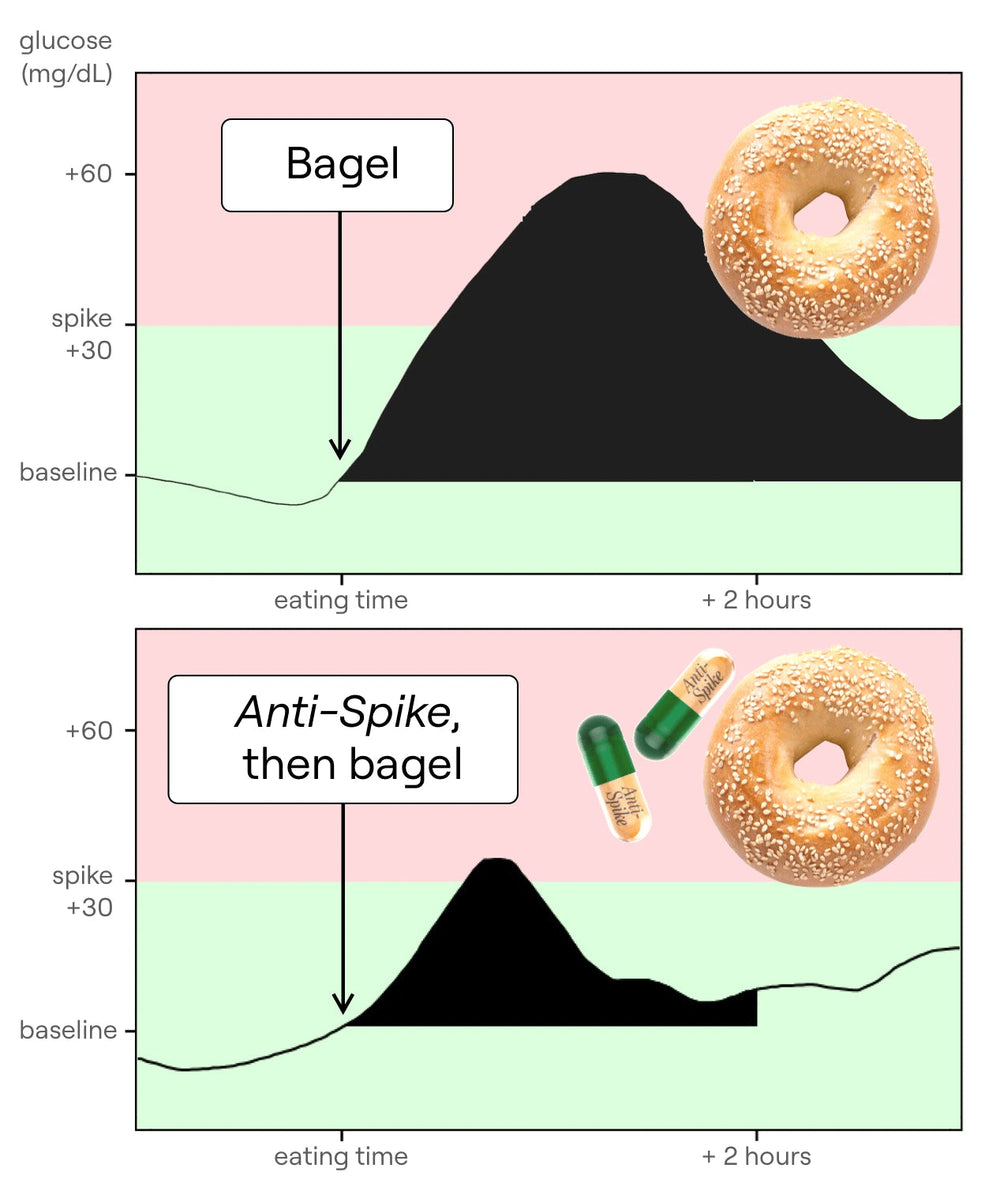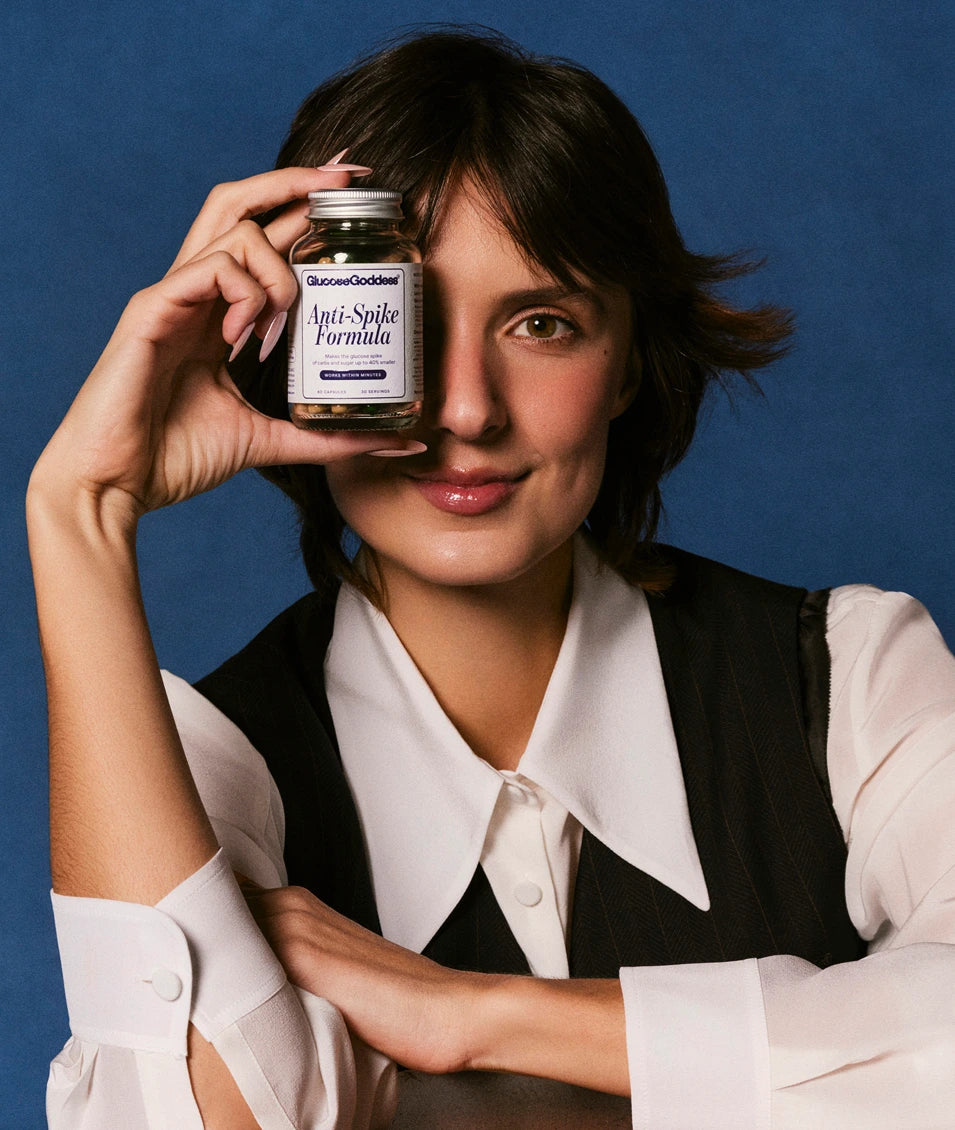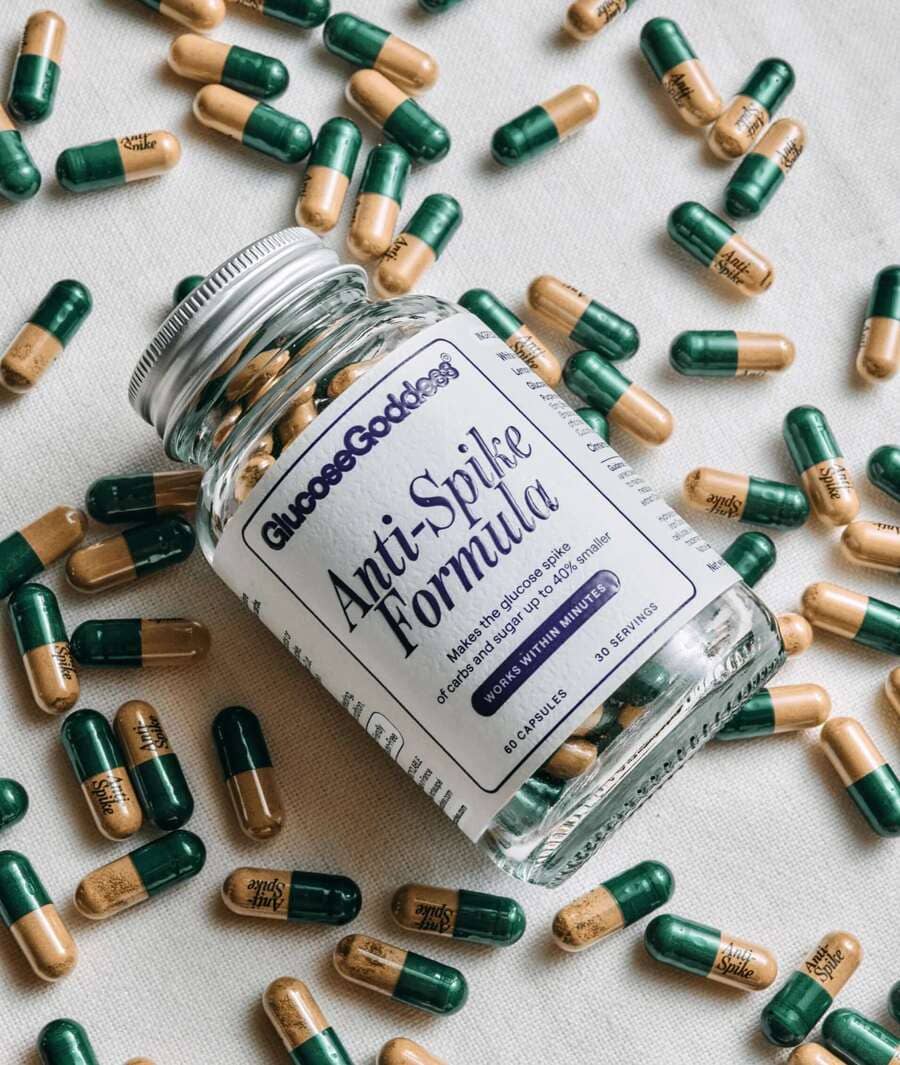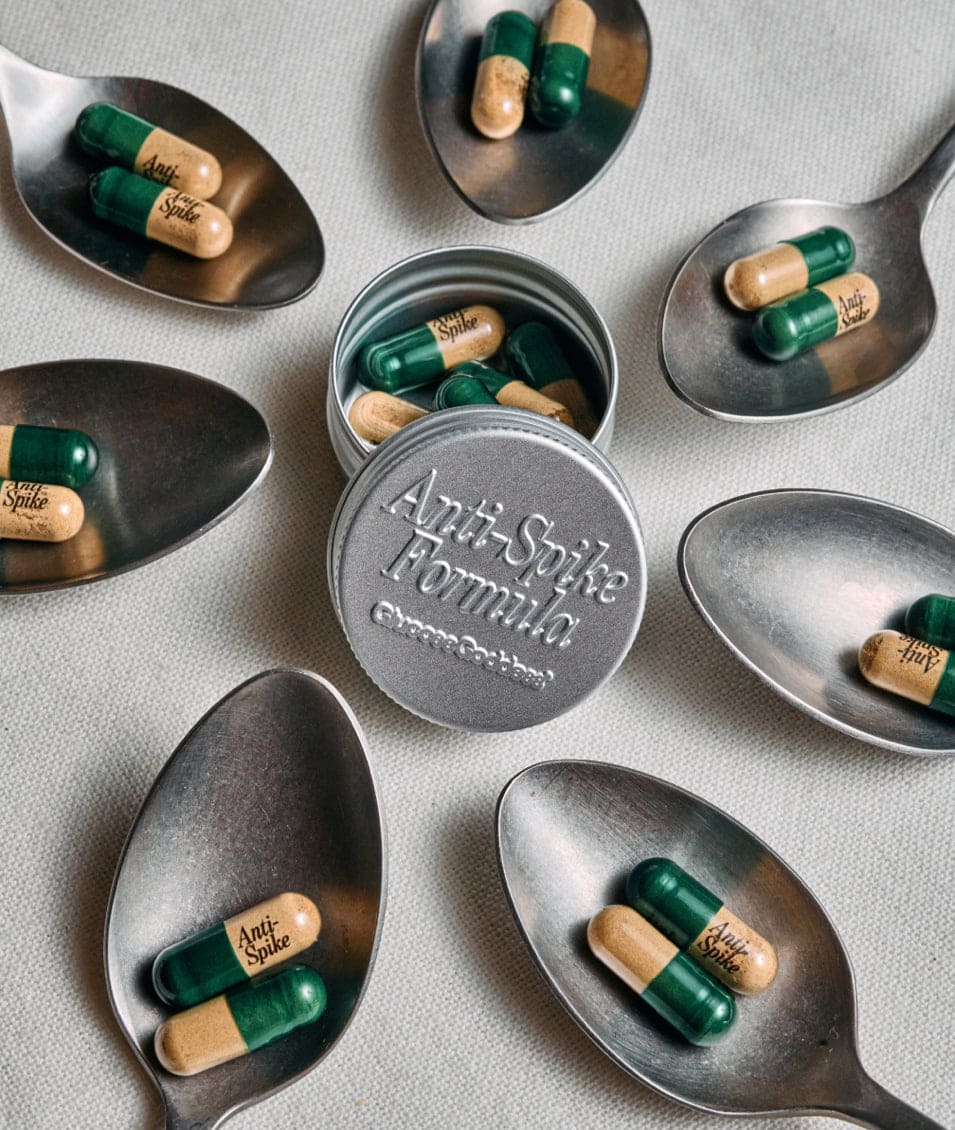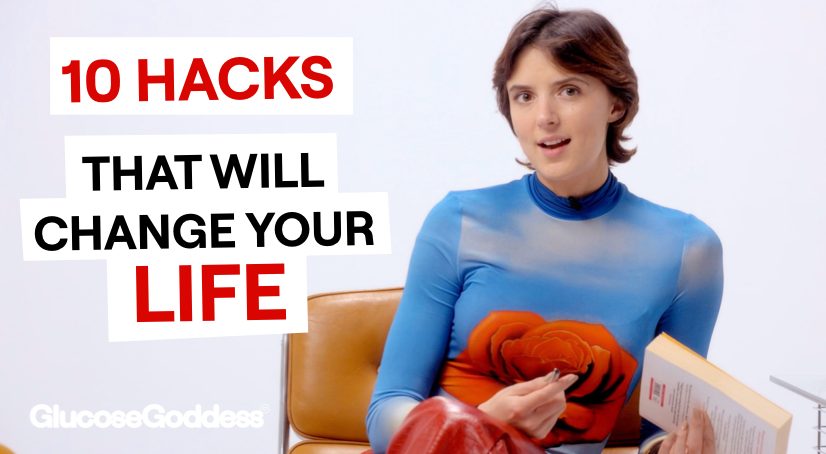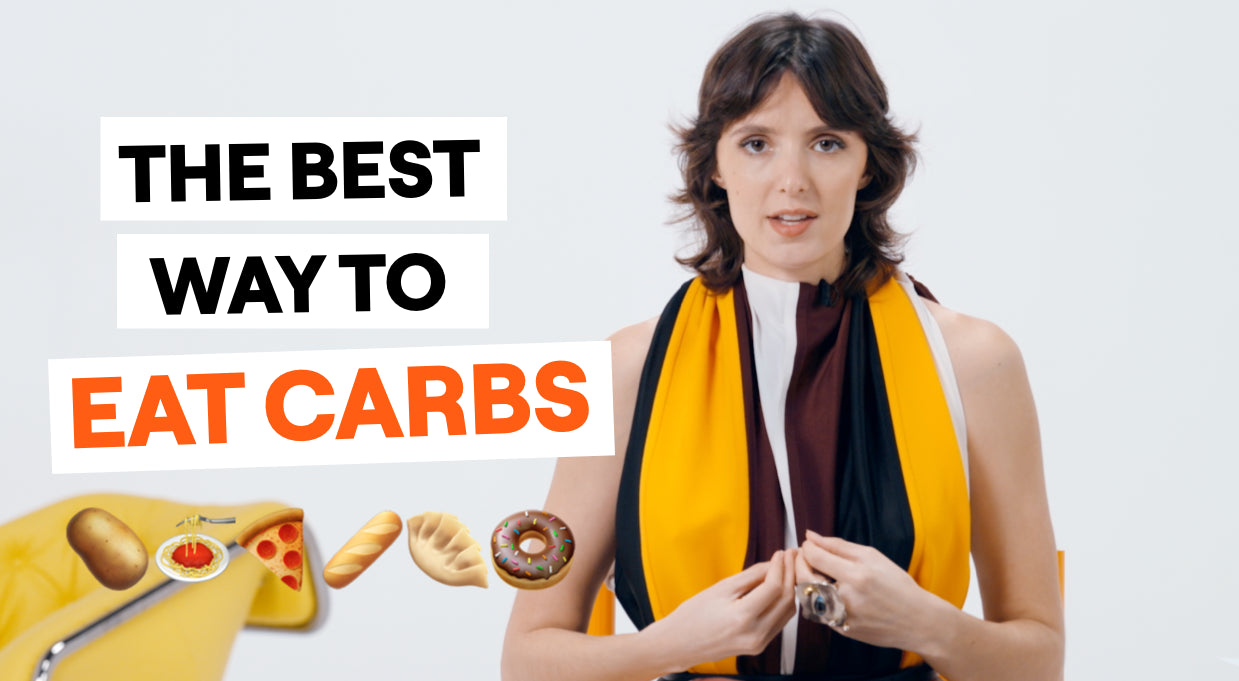SCIENCE EPISODE
Veggie Starters: The Simple Trick That Lowers Glucose, Insulin, and Hunger
This will lower your glucose spikes and make you feel so much better. Better energy, fewer cravings, clearer brain, less constant hunger.
Hello angels, and welcome to the glucose goddess show. I'm Jessie Inchauspé, a French biochemist who loves food and health and science and who can't wait to tell you about this fun little hack that is a true life changer.
So, today we're going to talk about why science tells us that we should eat vegetables at the beginning of a meal. So, this hack is probably the easiest hack you can do. What it asks you to do is simply to add a plate of vegetables to the beginning of your meals.
Now, why would we do this? What is the amazing impact of this small little change? We're going to get into it right now, but first, let me show you some very cool examples of it in action.
This is what your glucose levels look like when you eat a bowl of spaghetti. Spaghettis are starches, and starches turn to glucose when we digest them. If we have just a big bowl of spaghetti, that's a big bowl of glucose. It creates a glucose spike. And glucose spikes have consequences when we have them every single day of our lives. They lead to inflammation, to cravings, to fatigue, to mood disturbances, to being hungry all the time. They increase our insulin levels in our body, which is linked to a higher risk of type 2 diabetes. And the list goes on and on and on.
Now, my work centers on teaching you how to balance your glucose levels so that you can feel amazing physically and mentally. Now, look what happens when we add just a small little dish of arugula, which is a salad, before eating the same spaghetti bowl. We get a much smaller glucose spike in our body. Yet, we ate the same amount of spaghetti. And this is really helpful because when we've reduced glucose spikes, a lot of our symptoms diminish. We help our body manage carbs in an easier, less harmful fashion. And we just literally feel so much better.
Another example here, dumplings. And the casing of dumplings is usually rice. And that is also a starch. Dumplings on their own can create a glucose spike. Now, if we add some veggies before these dumplings here, I've added some radishes, you see a much smaller glucose spike, too.
And last example, I'll show you right now, is having a mushure, which is a sort of bread sandwich with ham and cheese in the middle. It's a very French thing. A cockmush on its own contains a lot of bread and so it's going to create a big glucose spike. And now if we add my favorite kale recipe as a starter before this cooks, look how much smaller the glucose spike is.
So these three examples are pointing us to something really interesting. It appears that when we add veggies to the beginning of a meal that would otherwise create a big glucose spike, we see a smaller glucose spike. And this is super helpful for so many aspects of our health.
So, let's have a little look at what is going on. Veggies, vegetables contain a really powerful substance called fiber. Fiber is the superwoman of our lives. She is the main character in this episode. We're going to talk about her a lot. And studies show us over and over and over again that when we have fiber at the beginning of a meal,
It has so many positive side effects on our health. I'm going to read you five titles of really cool scientific studies that show us this effect, so you can check them out if you want. They're also linked in the description.
The first one is eating vegetables first regardless of eating speed has a significant reducing effect on post-prandial blood glucose and insulin in young healthy women, a randomized controlled crossover study.
Second study food order has a significant impact on postprandial glucose and insulin levels.
Third study manipulating the sequence of food ingestion improves glycemic control in type two diabetic patients under free living conditions.
Fourth study, consuming carbs after meats or vegetables lowers postprandial excursions of glucose and insulin in non-diabetic subjects.
And finally, the effect of food order on ghrelin suppression.
So, this was a lot of complicated scientific wording. But here's the summary of these studies. When we eat vegetables at the beginning of our meal, something amazing happens in our stomach and in our intestine. The fiber as it arrives first before all the rest of the food has time to do two things.
First of all, it's going to create a sort of viscous protective mesh in our digestive system. This mesh created by the fiber will stay in place for a few hours and prevent glucose molecules coming down from, let's say, the pasta afterwards from arriving too quickly into our bloodstream. So, it slows down the speed of the arrival of glucose in our bloodstream. That's why we see the smaller glucose spikes.
Second effect, fiber first slows down what's called gastric emptying, which is simply the speed at which food moves through from your stomach to your intestine. Again, slowing things down in your digestive tract.
And then the third thing these studies are showing is that food order has an impact on our little L cells. Now, these cells are just hanging out in our digestive system, and they sense when food arrives, and they are in charge of creating a molecule called GLP1. I have a whole episode on this molecule. Check it out. It's fascinating. But the summary is that this molecule makes us feel satiated. It makes us feel full and it also reduces our glucose levels. Now, the studies are showing us that if we have veggies at the beginning of a meal, we can help these little cells produce more GLP-1.
So, this is where the veggie starter hack comes from. The concept is very simple. All you need to do is add a plate of vegetables to the beginning of your lunch or of your dinner. I usually recommend to do this before the meal of your day that's going to be highest in carbs and sugars. For most people, that's going to be dinner, but if you can do it before lunch, that's also great.
So, it's a plate of veggies. It can be any type of veggies you like. can be salad, broccoli, radishes, carrots, tomatoes, corettes, zucchini, artichokes, etc. Whatever vegetable you like and then you eat what you normally eat the rest of the time.
The reason I love this hack so much is because I think often when we're trying to change our diet to feel better, it can feel just so overwhelming. It can feel like I have to change everything I'm eating. There's no way this is going to be sustainable. With this hack, you don't have to change your meals. You simply add this veggie starter at the beginning of your meal, and you will see an amazing effect on your glucose levels, which you will feel, by the way, even if you don't have a glucose monitor. You will feel better, more energy, fewer cravings, a slower return of your hunger after eating.
And then within, what's happening in your body? less insulin release, which is so good for preventing chronic diseases, less inflammation, slower aging, healthier hormones, better brain. The list goes on and on and on.
And now, here's the really cool part about this hack is that traditions across the world actually mirror this very new science. What do I mean by that? I mean that this idea of having veggies at the beginning of a meal has actually been going on for a super long time in lots of different cultures. For example, in France we have this tradition of what's called “crudités” which means raw veggies you eat at the beginning of a meal. In Italy they have “anti pasti” at the beginning of a meal which can be other foods but sometimes and often is vegetables or “tabbouleh” which you find in Turkey, Lebanon, Israel which is chopped parsley with tomatoes and cucumbers also traditionally eaten at the beginning of a meal.
So somehow we've just figured out throughout the centuries that having veggies at the beginning of a meal is really helpful and good for us which is why we see it in so many traditions around the world. And today we understand the science of this hack and why it works so well.
And a big added bonus of this hack is as I was mentioning, veggies contain fiber. And we all need to eat more fiber my friends. This is a big issue. So as you're adding this veggie starter, not only are you helping your glucose levels, your brain, your body, etc., you're also eating more fiber. And today only 5% of Americans meet the recommended daily fiber amount. The US government calls fiber a nutrient of public health concern.
Now, why is this nutrient so important? Well, today because we eat so many processed foods, we've kind of forgotten to eat fiber because processed foods don't contain a lot of fiber. But it's actually so helpful for us. It's good for our gut microbiome. It lowers our cholesterol levels. As low as inflammation. It's a really key nutrient that we need to be eating.
So, overall, as you do this hack, you're going to feel amazing. You're going to help your body and your brain, and you're going to eat more fiber. It's literally the best thing ever, and you don't have to change what you're eating the rest of the time. Again, just adding this plate of vegetables at the beginning of a meal, will have a significant impact on your health. And I recommend you do this before the meal of your day, highest in carbs. Lunch or dinner, up to you. Breakfast is a bit harder. I feel like doing the veggie starter hack. So, focus on having a savory breakfast. That's the main hack in the morning and then lunch and dinner veggie starter hack.
If you want a list of all my 10 glucose hacks, there's a free PDF in the description of this episode to download them.
Now, I'm going to answer some very common questions about this hack because there are many.
First question, how many veggies do I actually need to eat? Listen, a little bit is better than nothing. If all you can do is have one cherry tomato, one baby carrot, one mouthful of broccoli, that's better than nothing. So, celebrate that. If you can only do that, it's totally fine. If you have more flexibility, I recommend the veggie starter to make up about one-third of your overall meal. So, think about per volume, the veggie starter should represent about one/3. So, it should be about half the size of your main dish essentially. That's probably a much easier way to say it. Yeah. So, your veggie starter should be half the size of your main dish. There we go. I just figured this out on live on air. This is a much better way to say it. So, half the size of your main dish afterwards.
Second question, what qualifies as a veggie starter? Any vegetable. They can be raw, they can be cooked, they can be boiled, literally anything you like that contains fiber. And if you're not sure what qualifies as a vegetable, have a look at my food classification master list in the description of this episode. I have a big column with like 50 different vegetables so you can see which ones would work for the veggie starter. But all your traditional vegetables work. Salad also works.
Now, a little note on soup. You might be wondering, can I have vegetable soup? A vegetable soup is better than having no veggie starter at all. Absolutely. But the problem with soups is that if we blend vegetables together, the metal blades of the blender growing really, really quickly actually pulverize the fiber particles in the veggies, making them less effective. And there's a big difference between a vegetable soup with, let's say, carrots and parsnips and broccoli and a potato soup. Potatoes are starches. So, a potato soup is not a good veggie starter because potatoes contain a lot of starch and they're going to create an increase in your glucose levels.
Next question. What do I do at a restaurant? The best thing to do, honestly, is to order, I think, a side dish of vegetables, like a side salad, a side dish of spinach, a side dish of green beans, and to have that as a starter. You can also order them at the same time. So, order the side dish of veggies and your main dish at the same time. Just eat the side dish of veggies first. Super easy, not complicated. Even if your friends are not having a starter, you can still do this hack.
What about mixing this hack with the vinegar hack? It's a wonderful idea. So, the vinegar hack also helps reduce our glucose levels by up to 30%. And all you have to do is to add a tablespoon of vinegar to the beginning of your meal. Now, you can drink it in some water. Make sure to always dilute it in water, or you can add it as a dressing on your veggie starter.
And this is a really fun and controversial graph that I'm going to show you. So, this is a big fast food meal with a cheeseburger, large fries, and on its own, of course, it creates a big glucose spike because it contains a lot of starches. Now, look at what I did. I just added at the beginning of this fast food meal a green salad that I got at the same fast food chain, and I asked for some vinegar that they had in a little packet. I made myself a veggie starter with a vinegar dressing and then I ate it and afterwards I ate the fast food meal. These were on two separate days. Of course, adding this little side salad and vinegar has significantly reduced the impact of that meal on my glucose levels.
So, why is this controversial? Well, because critics would say, "Oh, well, you're just enabling people to eat a lot of crap food. You're telling them as long as you have veggies, just go for it and eat all the crap food that you want." That's not what's going on here. What I'm explaining is that adding a veggie starter to your usual habits will significantly help your health. I'm not saying add a veggie starter and eat worse than before. I'm saying eat like you normally eat plus add this hack in and you will see an impact. If you use this hack as an excuse to eat poor junk processed food, it's not going to help you. The net effect is not going to be positive.
And now for a quick list of super easy veggie starters to get your creativity going. Some of my favorite really easy ones. Okay, a couple of pieces of leftover roast veggies. You can make these in advance, keep them in your fridge and just grab them. A few mouthfuls of pickled vegetables because yes, pickles do work. You can have like eight to 10 pickles. It'll be a good amount of fiber in there. Beware though, a lot of pickles are pickled with sugar in them as well. So, try to find some with no added sugar.
Uh, a sliced cucumber with some guacamole, easy. A sliced tomato with some mozzarella cheese, for example. And what's cool about the veggie starter hack is you can add more stuff to it. So, if you want to add some proteins and some fats that also don't contain glucose, you can. And it makes it more tasty.
Some marinated veggies from a jar, like artichokes, some canned hearts of palm, super tasty, or like some jarred white asparagus. You can buy these in advance. And just one jar of vegetables can be enough for a whole week for you.
If you want recipes, if you're keen to try my really easy 5 to 10 minute recipes to make super tasty veggie starters that the rest of your family will love, there are some free recipes in the description of this episode for you to try.
How much time should you wait between the veggie starter and the rest of the meal? So, studies have not tested the exact time, but here's what I can tell you. In the studies where they don't wait any time between the veggie starters and the rest of the meal, it still works great. So, you don't have to wait. It really doesn't matter.
I know for a long time we thought, "Oh, well, everything we eat is going to be mixed in our stomach and make a big soup. So, the order doesn't matter." Now, we know for sure, my dears, that the order does matter and that you don't need to wait. So, you can just eat them in sequence, veggie starter, and the rest of the meal.
Another common question I get is, "What about supplements?" If I can't do a veggie starter, can I use fiber supplements? I would not recommend those just because you're going to have to eat like eight to 10 pills to get any effect that would be similar to a vegetable.
If you can't do this veggie starter hack, you have two options. One, don't worry about it and do it the next time that you can. We can't always do the hacks and that's fine. Two, take my anti-spike supplement. This will reduce your glucose spikes by up to 40%. It's just two capsules you take before a meal. They don't contain fiber. They contain mulberry leaf, which is excellent at reducing the glucose spikes of a meal. It does not work in the same way at all as the veggie starter works. But it's amazingly powerful and natural. You can also combine both if you want. That's also linked in the description of this episode. And I have a whole episode on mulberry leaf because I'm fascinated by it. So check it out.
So that was the hack, my dears. Very simple. Have a veggie starter at the beginning of your meals. This works for adults. It also works for kids super super well. This will lower your glucose spikes and make you feel so much better. Better energy, fewer cravings, clearer brain, less constant hunger. Truly, it is a life- changer. And you don't have to change anything else that you're eating. Try it out. Try the science. It's fantastic. And let me know how it goes. Big kisses.
 Anti-Spike Supplement
Anti-Spike Supplement
 The Recipe Club
The Recipe Club
 Course
Course
 50 Breakfast Recipes
50 Breakfast Recipes
 50 Veggie Starter Recipes
50 Veggie Starter Recipes
 20 Vegan Recipes
20 Vegan Recipes
 20 Gluten-Free Recipes
20 Gluten-Free Recipes
 The 10 Glucose Hacks
The 10 Glucose Hacks
 Vinegar
Vinegar
 Alcohol
Alcohol
 Fasting
Fasting
 GLP-1
GLP-1
 What to Eat Before & After Exercise
What to Eat Before & After Exercise
 Protein
Protein
 PCOS
PCOS
 Menopause
Menopause
 My MRI Story
My MRI Story
 Breakfast
Breakfast
 Supplements
Supplements
 Clothes on Carbs
Clothes on Carbs
 Eggs & Cholesterol
Eggs & Cholesterol
 Chocolate
Chocolate
 Food Labels
Food Labels
 Veggie Starters
Veggie Starters
 Move After Eating
Move After Eating
 Why Glucose Matters
Why Glucose Matters
 Glucose Revolution
Glucose Revolution
 The Glucose Goddess Method
The Glucose Goddess Method
 9 Months That Count Forever
9 Months That Count Forever







